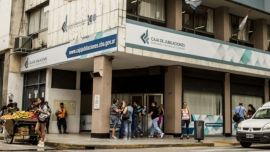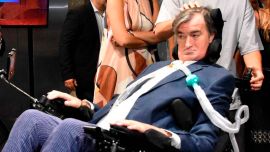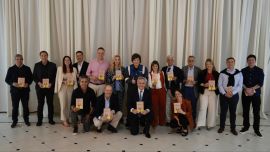Inflation in Argentina came in at 3.1% in April, towards the bottom of expectations and consolidating a trend of two consecutive months of deceleration.
This is in line with the average estimates of economists interviewed by Bloomberg who predicted inflation would fall to 3.1% due to the stability of the exchange rate, price controls, and restrictive monetary policy. This is compared to a rate of 3.4 percent in April.
Nonetheless, the interannual measurement of May 2019 compared to May 2018 shows an increase in the price level of 57.3%. Core inflation – a measure which excludes the food and energy sectors because of their volatility – meanwhile, remains high: 3.2% according to official data.
These figures could boost a market upturn that began this week when President Mauricia Macrio named leader of the opposition, Miguel Ángel Pichetto as his running mate in October’s elections. Argentina has a history of inflation crises. It ended 2018 with an inflation rate around 30%, one of the highest in the world and the second highest in Latin America.
Macri will need to reduce inflation and maintain the peso relatively stable in order to increase his chances of being reelected.
As past part of his strategy, his administration has frozen the price of electricity and gas bills, as well as public transportation until the end of the year.
The central bank has also maintained, without faltering, a strict monetary policy during the past month.
The freezing of several tariffs could also have contributed to the decrease in inflation.
The National Institute of Statistics and Census of Argentina (INDEC) also announced that the cumulative rise in the cost of living for the first five months of 2019 reached 19.2%.
Due to the rise of prepaids, the sector with the largest increase was health, where the rise in prices reached 5.1%. The next highest increases were housing, water, electricity, gas and other fuels (4%), transport (3.5%), and education (3.3%).
On the other hand, food and beverages, crucial for the family expenses, rose 2.4% which is. 0.4 percentage points more than in April.
After the announcement of the figures, Guido Sandleris, President of the Central bank, spoke to the media.
“We believe that this is a positive development,” he said.
Nonetheless, he cautioned that “these figures are still quite high.”
Comments from economist interviewed by Bloomberg
Sebastián Rondeau, a Latin America strategist from Bank of America Merrill Lynch predicts that the trend of decelerating inflation will continue.
“Our base scenario is that inflation should continue to decelerate to 2.5% per month in the three months leading up to the October election,” he said.
He added that there was a significant risk of October’s primary elections affecting foreign exchange markets depending on the results.
Lorenzo Sigaut Gravina, the chief economist for Ecolatina, noted that “floor of inflation” is elevated because labor – the primary cost of businesses – “will climb to a higher rate than last year.”
An economist who had a lower estimate before the announcement, Joaquin Bagües, the chief of strategy for personal portfolio, said that a rate above three percent would be “worrisome” while Priscila Robledo, and economist for Continuum Economics said before the announcement that she was not optimistic about how the market will react if the number, which turned out to be 3.1%, is between three and 3.4%.
- TIMES/PERFIL





















Comments